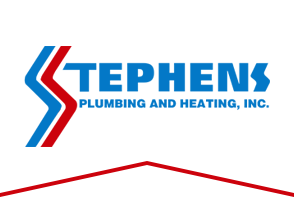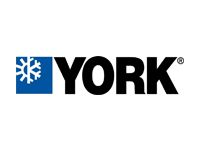Furnace Repair & Installation
24/7 Emergency Services
1-Year Labor Warranty
Licensed and Insured
Request a Service
Hero Request Form
Furance Repair & Installation Services
Our homes are our safe havens. They are meant to be comfortable and cozy sanctuaries away from the hustle and bustle. When our furnaces are acting up, our comfort is compromised. With 24-hour furnace repair services, you can count on the team at our HVAC company for all your furnace installation or repair needs in areas of Illinois such as Aurora, Bolingbrook, Downers Grove, Burr Ridge, Plainfield, Naperville, and Wheaton.
Blower or Belt Problems
Like any machine, furnaces have parts that may require replacement or fixing. Furnace belts and blowers have the potential to wear out or break over time. You can help extend the life of your furnace system by relying on our trustworthy furnace services in Downers Grove and other areas of Illinois.
Furnace Noises and What They May Means
Along with the above-mentioned issues, furnaces may sometimes make noises that can be alarming to homeowners. Here’s what to do if you hear any of the following sounds coming from your furnace:
- Booming: loud booms can be a cause for alarm. Booming could mean a buildup of gas and should be attended to by a professional furnace service right away.
- Clicking: clicking may mean there is an issue with the ignition. If attended to quickly and with the help of a service professional, an ignition problem can be fixed before causing heating issues.
- Squealing: squealing can indicate an issue with internal components, such as a belt or fan. When these begin to fail, squealing may occur. Fixing internal components should be left to a professional at a licensed HVAC company.
- Rattling: much like squealing, rattling can indicate an issue with the internal components of the furnace. Call a certified furnace repair technician for help when you hear rattling.
- Chirping: furnaces can sometimes chirp when they are first turned on after going unused for an extended period of time. If, after the first few runs of the furnace, the chirping doesn’t go away, call a technician at our HVAC company to receive reliable furnace services in areas of Illinois such as Naperville, Wheaton, Plainfield, Bolingbrook, and Downers Grove.
Which Type of Furnace is Best for Your Home?
If you’re researching the benefits of performing a furnace installation in your home, choosing the best heating system can be tricky. To help you decide, we’ve created a list of the types of furnaces available and the benefits of each type:
Gas Furnaces
Hands-down the most common furnace type in America, newer gas furnaces are extremely efficient and often cheaper to run than their counterparts. Although they may cost more to purchase and install, the monthly savings can quickly make up for this. Stephens Plumbing & Heating Inc provides furnace installation services in locations such as Wheaton, Winfield, Lombard, Lisle, Aurora, Clarendon Hills, and Joliet.
Oil Furnaces
Oil furnaces are less efficient than gas furnaces by 10–20% but require less upfront. These furnaces are typically found in homes in the northeastern United States and are a great option for homes without access to natural gas.
Electric Furnaces
Electric furnaces are cheaper than their gas counterparts and can last up to ten years longer. While cheaper on the front end, electricity is often more expensive than gas and may lead to higher monthly heating bills. Our staff at our HVAC company provides trustworthy electric furnace installation and repair services near you in locations such as Aurora and Elmhurst.
Propane Furnaces
If gas or oil are not available where you live, a propane furnace may be a great option for you. Often less expensive than electricity, propane can provide your family with the warmth and comfort you deserve.
5 Main Components of a Gas Furnace
Gas Burners
Gas burners are a set of chambers that are engineered to maintain the flames in a furnace. Once the temperature in your household becomes too low, a thermostat sends an electrical signal to open the gas valve. Next, a pilot light or ignition mechanism will create a reaction with the natural gas to produce flames. Gas furnaces are equipped with a flame sensor that is designed to detect and monitor flames.
If the sensor does not detect a flame, an electrical signal will be circulated to deactivate the incoming gas. The flame sensor is a critical component that prevents gas leaks and fires. When the gas burners become contaminated, the furnace will become less efficient. To keep your household warm in the winter, give our team a call at (630) 968-0783. We offer trusted furnace repair services in locations such as Bolingbrook, Aurora, Elmhurst, Plainfield, and Downers Grove.
Exhaust Pipes
Natural gas is a useful resource that can be used to efficiently heat your house or condo. On the other hand, a gas leak can cause dangerous symptoms such as dizziness, headaches, impaired vision, nausea, or loss of consciousness. Luckily, the byproducts of natural gas are removed from your household through durable steel exhaust pipes. Although steel is the most popular material utilized to assemble exhaust pipes, a furnace may be equipped with polypropylene pipes that are engineered to remove gas from your home.
Heat Exchangers
The combustion process in a gas furnace occurs in a set of metal pipes called the heat exchanger. Once the flames are activated, heat energy is transferred to the pipes. Next, a fan is utilized to collect cold air from each room of your house. As the incoming cold air passes through the warm heat exchanger, the temperature of the air will increase. When the incoming air reaches a sufficient temperature, the blower will distribute the warm air to each area of your household through a network of air ducts.
This set of metal tubes is critical to the distribution of heat in your home. Unfortunately, it is not uncommon for cracks and holes to form in the heat exchanger as your furnace reaches the middle of its life cycle. To prevent the negative consequences of carbon monoxide poisoning, it’s important to hire a licensed technician to perform an annual inspection of the heat exchanger. We offer dependable and safe furnace repair services to households in areas of Illinois such as Wheaton, Aurora, Downers Grove, Plainfield, and Elmhurst.
Fan
When the blower fan in a gas furnace is activated, a supply of cold air is collected by each of the return vents in each area of your home. Next, the heat exchanger releases heat into the incoming cold air from the air ducts. The latest energy-efficient furnaces include variable or multi-speed blowers to improve the circulation of warm air in your house. A multi-speed fan is designed to operate at a variety of capacities, such as high or low. The speed of the fan is set by a licensed technician when the furnace is installed. On the other hand, a variable-speed blower is able to adjust its speed to accommodate your heating requirements.
Thermostat
A basic and programmable design allows homeowners to quickly adjust the temperature of the interior air. Thermostats are integrated with a sensor that continuously monitors the temperature in your household. Once the temperature of the air becomes too low, the thermostat will send an electrical signal to the control board in your furnace. Next, a signal is distributed to an ignition switch to open the gas valve. The incoming gas will be ignited by an ignition mechanism to start the heating cycle.
Furnace Sizes
A Metric called British Thermal Units (BTU's), is utilized in the HVAC industry to measure the capacity of a furnace. This metric is designed to determine the heat output of a furnace. Standard furnaces feature a BTU rating that ranges from 80,000 to 100,000. Prior to purchasing a new energy-efficient furnace, it’s important to become familiar with average heat output and efficiency ratings. A furnace that is designed to produce 90,000 British thermal units of heat with an 80% efficiency rating will distribute a total of 72,000 British thermal units of heat energy to a household. On the other hand, close to 20% of the total energy is lost during the heating cycle.
Furnaces with an efficiency rating of 95% AFUE will produce more heat when compared to a system with an 80% AFUE efficiency rating. The term AFUE stands for Annual Fuel Utilization Efficiency. This metric is used to determine the total quantity of gas that is transformed into heat energy in comparison to the quantity of fuel that is utilized by a furnace. A majority of new furnaces feature an AFUE rating of 90% or higher.
24 Hour Furnace Repair Services in Downers Grove, Il, and Other Locations
When your furnace is in need of repair or replacement, call the team at our HVAC company in Downers Grove, Illinois. At Stephens Plumbing & Heating Inc, your comfort is important to us. Our team of HVAC specialists is able to provide dependable 24-hour furnace repair services in areas such as Plainfield, Downers Grove, Bolingbrook, Wheaton, Naperville, and Aurora. We will bring the heat back to your home when you need it most. Stephens Plumbing & Heating Inc also provides other HVAC services such as air conditioning repair, tune-up, replacement, and installation. From broken water heaters, cracked water lines, malfunctioning sump pumps, to repiping, our team is able to accommodate your HVAC or plumbing issue. Don’t hesitate to call us anytime, day or night, for emergency HVAC services.
Furnace and Heating Frequently Asked Questions (FAQ’s)
Do you have a question or concern about the furnace or heating system in your household? Prior to calling our team of certified HVAC contractors, view the frequently asked questions (FAQ’s) below.
What is a High-Efficiency Furnace?

High-efficiency furnaces feature an Annual Fuel Utilization Efficiency (AFUE) rating that varies from 90 to 98 percent. A majority of efficient furnaces meet the qualifications of the Energy Star program that was created by the U.S. Department of Energy and the Environmental Protection Agency. Every single furnace that is certified by the Energy Star initiative releases minimal pollutants into the air.
The goal of this program is to promote the purchase of furnaces that are less harmful to the environment. Customers are given tax incentives and rebates for purchasing gas furnaces with high Annual Fuel Utilization Efficiency (AFUE) ratings. To qualify for tax rebates, you are required to purchase a gas furnace with an efficiency rating of 90% to 95%. The minimum efficiency rating will vary in the northern and southern states of the country.
A majority of high-efficiency furnaces are equipped with an electronic ignition system and a variable-speed blower fan. Ordinary types of furnaces available to consumers include single-stage, two-stage, and modulating. The newest furnaces for sale on the market are built with variable-speed blowers to provide superior airflow in your household. Energy-efficient furnaces include steel pipe heat exchangers and a sealed combustion compartment. Our staff offers efficient furnace services to homeowners in locations in Illinois such as Bolingbrook, Wheaton, Plainfield, Downers Grove, and Aurora.
What is a Standard-Efficiency Efficiency Furnace?

Standard efficiency furnaces include an Annual Fuel Utilization Efficiency (AFUE) rating that ranges from 80% to 83%. Unlike high-efficiency furnaces, it can be hard to find a standard-efficiency furnace with a modulating design. Most types of standard-efficiency furnaces feature a single-stage or two-stage design. These furnaces are built with an electronic ignitor that is capable of creating safe and reliable flames in a matter of seconds.
What is a Low-Efficiency Furnace?

Low-efficiency furnaces with Annual Fuel Utilization Efficiency (AFUE) ratings of 55% to 72% are no longer utilized in new houses. While standard and high-efficiency furnaces feature a dependable electronic ignition system, low-efficiency furnaces are equipped with a small standing flame or pilot light. Since the flame is activated continuously, this type of system wastes a decent amount of natural gas each year.
In addition, the fan in low-efficiency furnaces is only capable of operating at a single speed. This type of furnace includes a single-stage configuration and cast-iron heat exchangers. If you have a single-stage furnace on your property, you may be spending too much money on your gas bills each month. Give our staff of certified HVAC technicians a call by phone at (630) 968-0783 to discuss the benefits of upgrading to a standard or high-efficiency furnace. The team at Stephens Plumbing provides proven furnace repair and installation services to homes in Elmhurst, Plainfield, Bolingbrook, Aurora, and Downers Grove.
Reviews
Related HVAC Services
Learn More About
Stephens Plumbing & Heating, Inc.
Located in Downers Grove, IL. Stephens Plumbing & Heating Inc specializes in plumbing and HVAC services. 24/7 emergency services. 1-year labor warranty. Licensed and insured. In business since 1923. 2-year warranty on most parts. Call today for more information.






Share On: